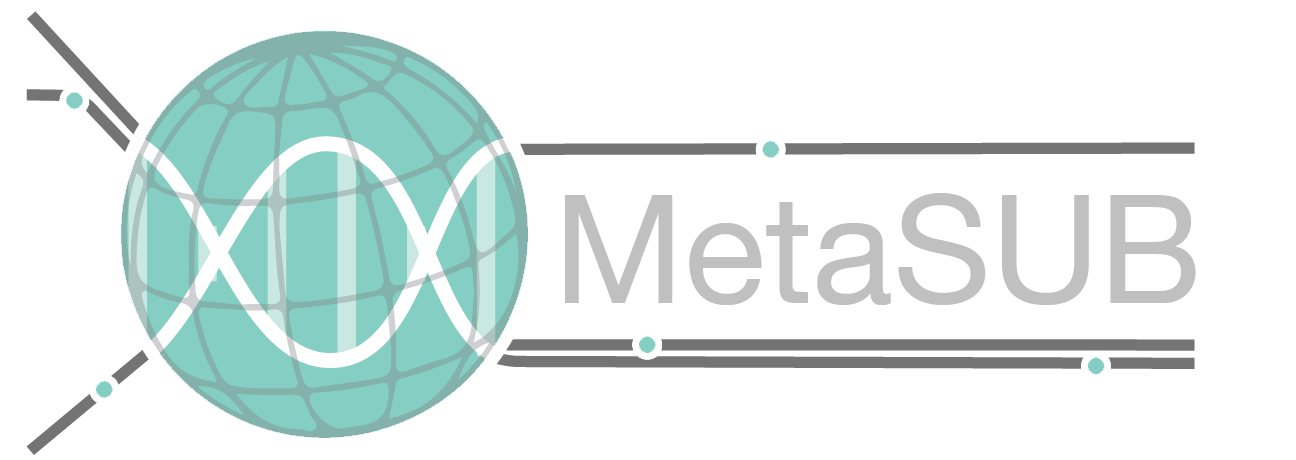Session 2: Metagenomics Snapshots Around the World
“The Shanghai Subway System and Quality Control Needs for MetaSUB” – Leming Shi, Fudan University, China
We will give an introduction to the Shanghai subway system and how we may contribute to the MetaSUB consortium. Then lessons learned from the three phases of the MicroArray and Sequencing Quality Control (MAQC/SEQC, www.nature.com/nbt/focus/maqc/, www.nature.com/focus/maqc2/, and www.nature.com/nbt/collections/seqc/) project will be shared, hoping to help the planning and execution of MetaSUB.
—
“Sao Paulo Subway Genomics–Plan of Action” – Houtan Noushmehr, University of São Paulo, Brazil
I will highlight and describe the Sao Paulo subway system, describe some of our aims and goals with this project, and introduce our team of student volunteers and how we plan to collect samples.
—
“PathoMap Japan Node” – Haruo Suzuki, Yamaguchi University, Japan
We did swabs of subways in Tokyo and Sendai. Based on questionnaire data (“What are you touching in subway?”) from respondents, i.e. crowdsourced workers (lancers.jp), stairwell railings were selected as sampling sites for this preliminary study. We prepared tools for crowdsourced sample collection: i.e. data submission website, swab-kit, letterpack, Japanese instruction, and GeoLocation-tagging using Global Positioning System (GPS) from mobile
sensing. We discuss possible problems, including too much cleaning (every 2-3 days) in Tokyo subway, and effects of sample storage temperature on microbial community.
—
“Multidisciplinary Research in Infectious Diseases: The CISEI Research Agenda” – Jesus Martinez Barnetche, Center for Research in Infectious Diseases, National Institute of Public Health, Mexico
The Center for Research in Infectious Diseases of the National Institute of Public Health is now 30 years old. Since its creation, the research activities of the Center have attempted to blend basic and applied research in infectious diseases. Until the last 5 years, the core of CISEI research dealt with HPV, vector borne diseases (mainly malaria and dengue) and antibiotic resistance. In the past 10 years, we incorporated novel approaches such as NGS and bioinformatics to modernize and leverage research. Currently, a more diversified agenda is planned for the coming decade, which includes the incorporation of epidemiologists and mathematicians to develop a fully integrative and multidisciplinary agenda in infectious disease research to support the National epidemiological surveillance infrastructure and operation.
—
“Metagenomics 3C, Full Length 16S Sequencing on Illumina, and the Human Diabetic Skin Microbiome” – Catherine Burke & Aaron Darling, University of Technology Sydney, Australia
Shotgun metagenomics has been an incredibly useful tool, but current sequencing protocols are unable to capture some of the most valuable information about microbial communities: genetic linkage information. Short sequence reads provide very little information on which genes, polymorphisms, or plasmids reside in the same cells. We introduce an adaptation of the 3C and Hi-C protocols to metagenomics that enables some of this linkage information to be recovered. We also introduce a protocol that enables high throughput sequencing of full – length 16S rDNA genes on the Illumina MiSeq, and discuss application of this and the standard V4 amplicon protocol to the human skin microbiome in healthy and diabetic patients.
—
“Accurate Functional Annotation of Metagenomic Samples” – Hugues Richard, University Pierre et Marie Curie, France
While analysis of metagenomic samples are primarily concerned by taxonomic annotation, using protein domain annotation can provide valuable additional information on the metabolic processes at play. I will present new computational paradigms that have been recently developed in the lab to identify and classify very divergent protein sequences in genomes and metagenomes. This opens the way to much finer annotations implying an unprecedented zooming into the metabolic processes of different environments. We shall briefly present the ideas of the computational method and its impact in the understanding of ecological and evolutionary information about marine ecosystem function, on which we are currently applying our method.
—
“The Microbiome of the Eye” – Zhi Xie, Sun-Yat-Sen University, China
During my talk, I will briefly describe the city we are going to swab, Guangzhou. In addition, I will introduce our team at Guangzhou, Dr. Lai Wei and Dr. Hongwei Zhou as well as our related work. Finally, I will give my view of how MetaSUB can help us understand human health.
—
“Sequencing Everything” – Stephan Ossowski, Center for Genomic Regulation, Spain
The Ossowski lab is developing methods for computational genomics and epigenomics, with a strong focus on NGS applications in medical genomics research, clinical diagnostics and precision medicine. The group has implemented algorithms for variant identification and prioritization in rare and familial disease as well as in large-scale cancer studies. The expertise in computational NGS analysis of personal genomes has been translated into a platform for clinical diagnostics, which has been applied to identify causal variants in diseases like ataxi, myasthenia, cystic fibrosis, immunodeficiency, phenylketonuria and hyperkalemia. As part of the International Cancer Genome Consortium (ICGC) and the Pan Cancer Analysis of Whole Genomes (PCAWG) consortium the group has developed methods for identification of cancer driver and risk genes, heterogeneous somatic copy number alterations as well as somatic indels. As complementary fields of activity the group is developing wet-lab and computational approaches to study the epigenome of healthy and disease tissue, with a focus on identification of changes in regulatory activity caused by genetic or epigenetic variability as well as molecular epidemiological studies of multi-antibiotic resistant bacteria in clinical environments.
